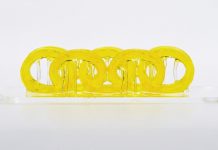
Have you ever been frustrated by how slow your computer or smartphone gets sometimes?
Or wondered how the data on our devices is stored?
Well, with the ever-growing need for faster and better technology, researchers have been searching for improved ways to store data on our devices.
To break it down, our gadgets store information using what we call “memory technology”.
The current ways we do this, while amazing, have limitations. They’re not fast enough, can’t hold enough data, or use too much battery power.
This is a problem, especially for newer applications that need a lot of data, like some AI systems or high-definition video streaming.
One promising solution is something called “ferroelectric memory”. Without diving too deep into the techy jargon, this is a special kind of memory that can keep data even when the device is turned off.
Recently, there’s been a lot of excitement about a new material that could be a game-changer for this kind of memory. It’s named α-In2Se3, and it’s excellent for storing data super-fast.
But, like many innovations, this one had its challenges. One major hurdle was how to design these memory devices on a tiny scale.
Think about it like trying to build an incredibly detailed sandcastle using only your hands. Researchers needed a precise way to set up these devices.
A team led by Professor Yutaka Majima from the Tokyo Institute of Technology might have found the answer.
They’ve come up with a new design for a memory device using α-In2Se3 that addresses this challenge. Instead of placing the material on top of the device’s connectors (like how you’d put toppings on a pizza), they placed it beneath (like placing ingredients inside a sandwich).
This new setup uses tiny channels that are only about 100 times thicker than a human hair!
Why is this so cool? Well, because of this tiny design, more memory can be packed into a small space.
It’s like being able to fit more books into a bookshelf without making it any bigger. Plus, this new way of arranging things fits nicely with how most gadgets are made today. That means it could be easier and cheaper to make newer and faster devices in the future.
In their tests, the researchers found that their new memory design was quite impressive. It could switch between storing data very quickly, could hold onto this data for a long time, and could be used over and over again without breaking down.
This is a big deal because it means devices using this technology would be super reliable.
Professor Majima is quite excited about their findings. He said, “Our new memory design is a big step forward. We think it’ll change how data is stored and open up new possibilities for many devices, including smart home gadgets, AI systems, and more.”
In simpler terms, the way our devices store and access information might soon see a significant upgrade.
This could lead to faster smartphones, more efficient computers, and even smart gadgets we haven’t even imagined yet. So, the next time you find yourself waiting for an app to load or a video to play, just remember: a faster and better solution is on the horizon!
The study was published in Advanced Science.
Follow us on Twitter for more articles about this topic.



